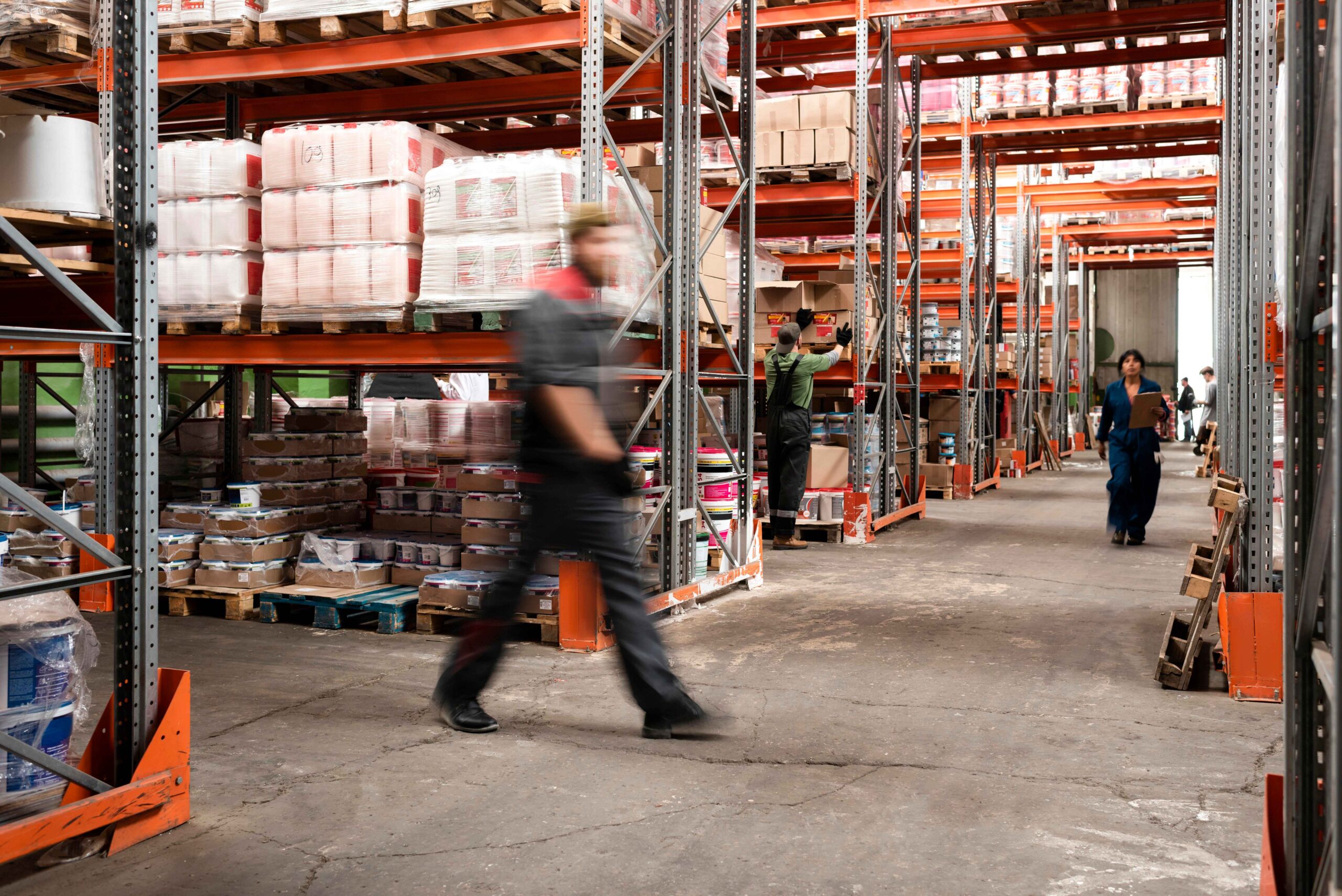Effective warehousing service is a crucial factor for successful sellers, ensuring timely deliveries and cost efficiency. However, achieving excellence in warehousing demands more than just wishful thinking. You need to understand inventory control well and have a clear plan to get better results.
If you’ve struggled with messy warehouse operations or want to improve how things run. In this guide, De Hubs will cover the basics of a good warehousing service and share helpful tips to improve your warehouse operations.
What Is Warehousing Service?
If your business sells products, you probably need a place to store them before sending them to customers unless you use a dropshipping model. Most businesses use a warehouse or fulfillment center for this.
But managing stock like receiving, storing, and shipping orders can get messy without a proper system. Poor warehouse management can lead to delays, wrong items being sent, or even missing orders.
Warehouse management means keeping track of everything that comes in and goes out of your warehouse. As your business grows, handling deliveries and shipments can become harder, but good warehouse management helps make it faster and easier.
Also called warehousing, warehouse management covers every step of the order process. This includes tracking inventory, receiving stock, storing products, picking and packing items, and shipping them. But it also goes beyond these steps.
Good warehousing service gives clear benefits:
- Better Customer Experience: Even though warehouse work happens in the background, it affects how fast and correctly customers get their orders.
- Lower Costs: A well-organized warehouse helps staff find, move, and ship products more easily, which saves time and money.
- Smoother Supply Chain: With better warehouse management, orders are handled faster, shipments are quicker, and storage space is used better helping the whole supply chain work more efficiently.
What Is Warehouse Management System (WMS)?
As mentioned earlier, running a warehouse is not easy, and it gets more complicated as your business grows. That’s why many companies use warehouse management system to help manage their daily warehouse tasks more smoothly.
A warehousing service includes tools and support both software and hardware that help improve warehouse operations. Some people call it inventory software or warehouse software, especially if it’s used online. But overall, a warehousing service helps make storage and order handling easier.
This service can be part of a larger business system, like an ERP (Enterprise Resource Planning), or it can work on its own to help manage warehouse work. Warehousing services help in many ways, such as:
- Showing real-time updates on stock levels and where items are stored.
- Using data and automation to guess future sales and demand.
- Using smart tools like AI to plan and carry out daily warehouse tasks.
- Giving clear step-by-step instructions for jobs like receiving and storing stock.
- Tracking performance and showing if there are any problems in warehouse operations.
The Warehousing Service in Five Simple Steps
Warehousing is an important part of the supply chain. How it works can depend on the kind of products a business handles. For example, businesses that sell perishable goods (like food) will manage their warehouse differently from those that sell long-lasting products.
In the same way, manufacturers may store and handle items differently compared to trading companies.
Even with these differences, warehousing service usually focus on a few key goals. These include:
1. Inventory Tracking
This means keeping track of how much stock is in the warehouse, where it is stored, and when more is needed. It helps businesses know what’s available, manage orders from suppliers, and plan for future demand.
2. Receiving and Storing
When new goods arrive, they must be received and stored properly. In a well-run system, products are scanned as they arrive and quickly placed in the right storage spots like shelves, pallets, or cold rooms. Any delays or confusion here can slow down the whole process. That’s why clear instructions and handheld devices are useful for warehouse staff.
3. Picking and Packing
When a customer places an order, the right products must be picked from storage. There are different ways to do this, like zone picking or batch picking, to save time and energy. After picking, the items are packed. The way items are packed depends on the type of products, but checklists and systems help make sure orders are correct.
4. Shipping
This is the final step is sending the order to the customer. Shipping can be tricky because of costs, distance, and the need to protect items. For example, frozen goods may need special cold packaging, and wet goods need waterproof wrapping. Tracking the shipment and giving updates to customers is also important.
5. Reporting
Once the order is delivered, the system should update the stock and show performance results. Reports help track important numbers like returns and mistakes. Warehousing services often use software to show this data clearly, so businesses can fix issues and improve future orders.
Each part of the warehousing process is connected. Good planning and clear steps in each part help make the whole system work better, leading to smoother operations and better results.
Conclusion
Every business that sells physical products depends on smooth warehouse operations to stay competitive. As we’ve covered, a strong warehousing service is not just about storing goods but it’s about having a clear plan, the right tools, and smart systems like a Warehouse Management System to manage everything from receiving to shipping.
If you’re ready to improve your warehouse operations, now is the time to work with a trusted expert. De Hubs is a leading warehouse in Malaysia, offering reliable warehousing services backed by technology and years of experience. With expert warehouse operations, cutting-edge technology, and dedicated service, De Hubs can help you streamline your supply chain and grow your business smoothly.
Find more about:
